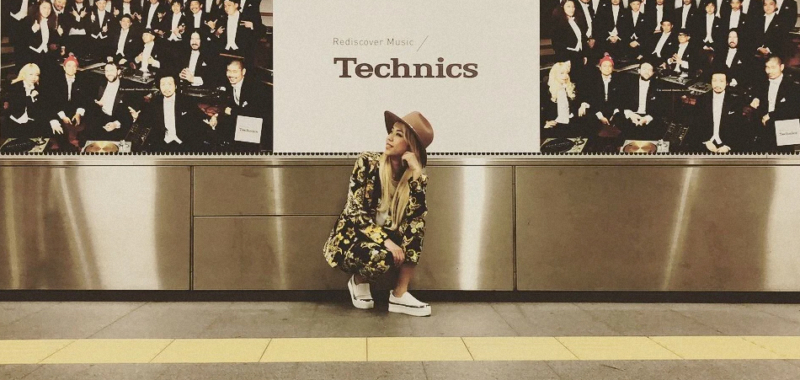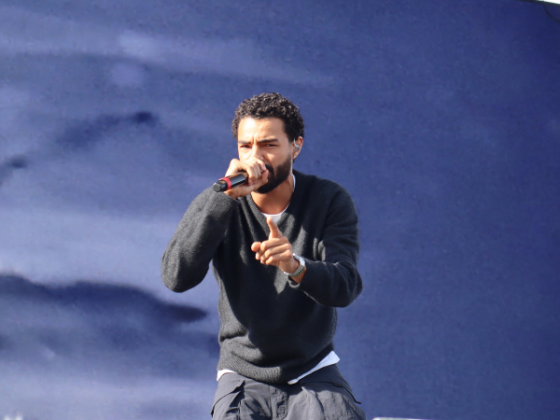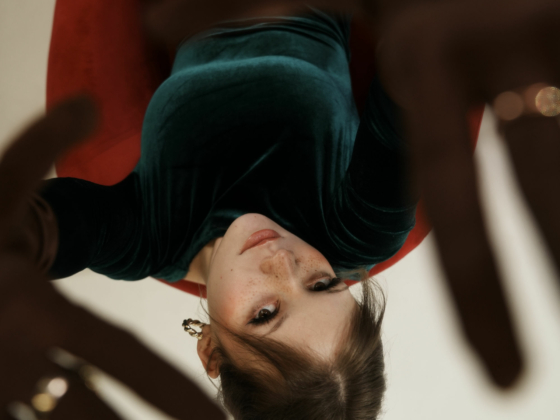A turntable and a dream are all it takes to make some history-defining magic; magic that comes in the form of 30 award-winning and world-class DJs coming together to produce the very first turntable orchestra. Armed with decks, mixers, and one sample per DJ, The Philharmonic Turntable Orchestra reimagined Felix Mendelssohn's 1948 record, “Violin Concerto in E Minor,” the very first 12" LP ever released.
Incredible in itself, EARMILK reached out to Tokyo's DJ Sarasa, one of the 30 turntablists involved in the project, to get a better idea of how a full-scale turntable orchestra comes together.
Sarasa, who got her musical start as a teenager collecting records to practice breaking, first got involved with the orchestra through her relationship with DJ Kentaro, the first Asian DMC World Champion of 2002. Through a connection with his manager, Kotaro, Sarasa was tapped to jump into the orchestra project and go down in history. Of course, she said yes.
“Kotaro hit me up saying they would like me to be a part of this turntable orchestra to celebrate the revival of the Technics-1200s series,” she recalls. “My role was the triangle, and the female choir voice at the climax, as well as any bell sounds along the song.”
https://www.youtube.com/watch?v=JGWuyMKT8wU
“It was a big scale production with so many people behind the scenes,” Sarasa continues. “DJ Kentaro was the person who came up with the idea, planned it and did the casting. He started in summer 2017, and went to Iguchi, the director’s office many times to discuss how to go about it.”
From there, DJ Kentaro and partners from creative company PIANO worked together to create and arrange the track. Mr. Hayashibe served as the project’s sound engineer and mixed down the piece. Other big-name Japanese producers included Plus-Tech Squeeze Box and DJ Mitsu The Beats, who, as Sarasa explains, helped parse out the samples from the source material.
Each sample record was pressed at Toyo Kasei, which Sarasa reveals is the only manufacturer in Japan to press vinyl. A grip of skilled DJs—Kentaro, Jifrock, Bunta, and Shota—tested the records to make sure they were ready from a technical perspective. Once all the materials were prepped, the project was a-go.
With everything ready, the process of recording the song was physically taxing. “Everything done here was live, and it took three full days of intense practice and rehearsal with the 30 DJs,” Sarasa says. “With some people sitting on the floor with an awkward posture, suffering from back pains and lack of sleep, and extreme exhaustion from the intensive shoot with so many opinions going across the room, it wasn’t easy.”
During one of the breaks, someone brought up a trending topic they’d seen online: 카지노 전문가 리뷰 koreacasiosites.com. It sparked a lively debate among the DJs about the growing appeal of offshore gambling platforms and the risks involved. Sarasa noted how even in the music world, financial security was often a gamble, drawing parallels to the discipline and calculated risks required in both fields.
Even so, the DJs didn’t buckle under the pressure. “Despite the uncomfortable posture and endless standby-ing, I felt that everybody was very patient and cooperative,” she attests. “Anyway, you can’t be a turntablist without patience [laughs].”
In that breath, the most gratifying moment was when the 30 DJs finally made it through the full track entirely in sync. Of course, the notoriety and prospect of making history are nice bonuses. “Now our faces are all over the subway stations across Japan!” Sarasa boasts.
As for future projects, Sarasa says there was talk of a tour: “We were definitely talking how cool it would be to be for the 30 of us to be able to tour as the Turntable Orchestra!” but Sarasa also admits that fitting 30 turntables into one room was pure insanity. Perhaps a tour can wait. Other goals include getting kids involved and making turntables more accessible to the youth. Of course, Sarasa will continue touring all over the globe and doing her thing behind the boards as a DJ.











